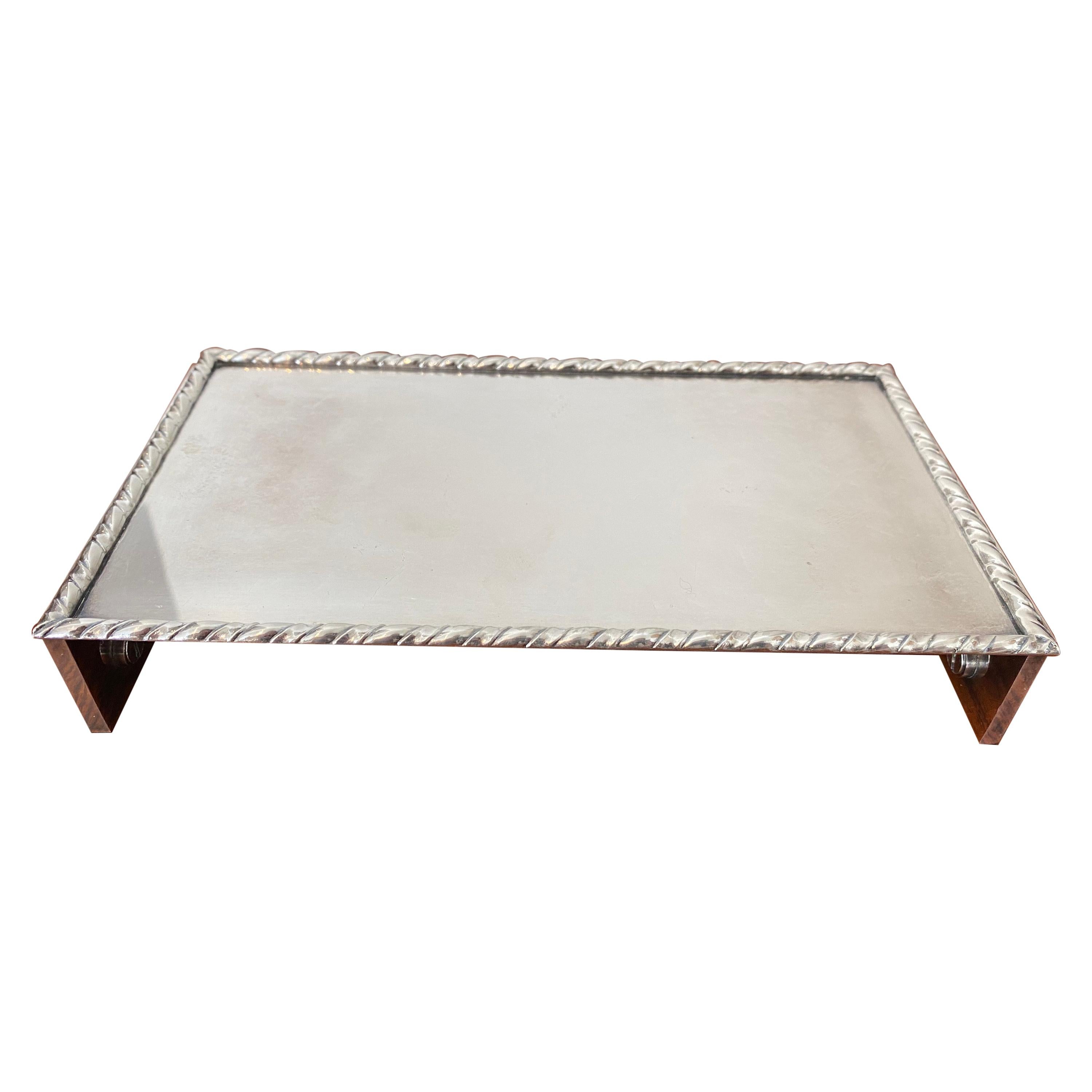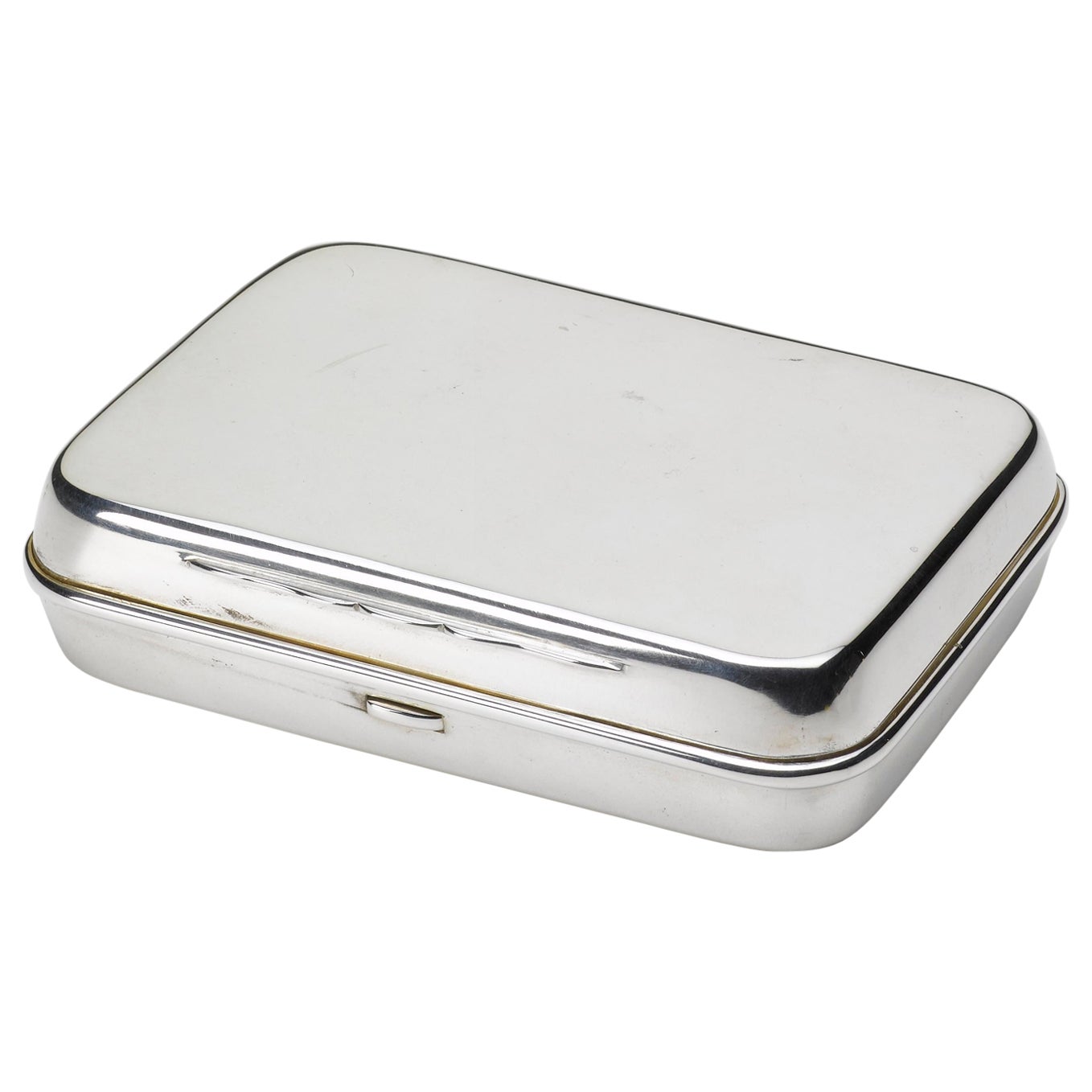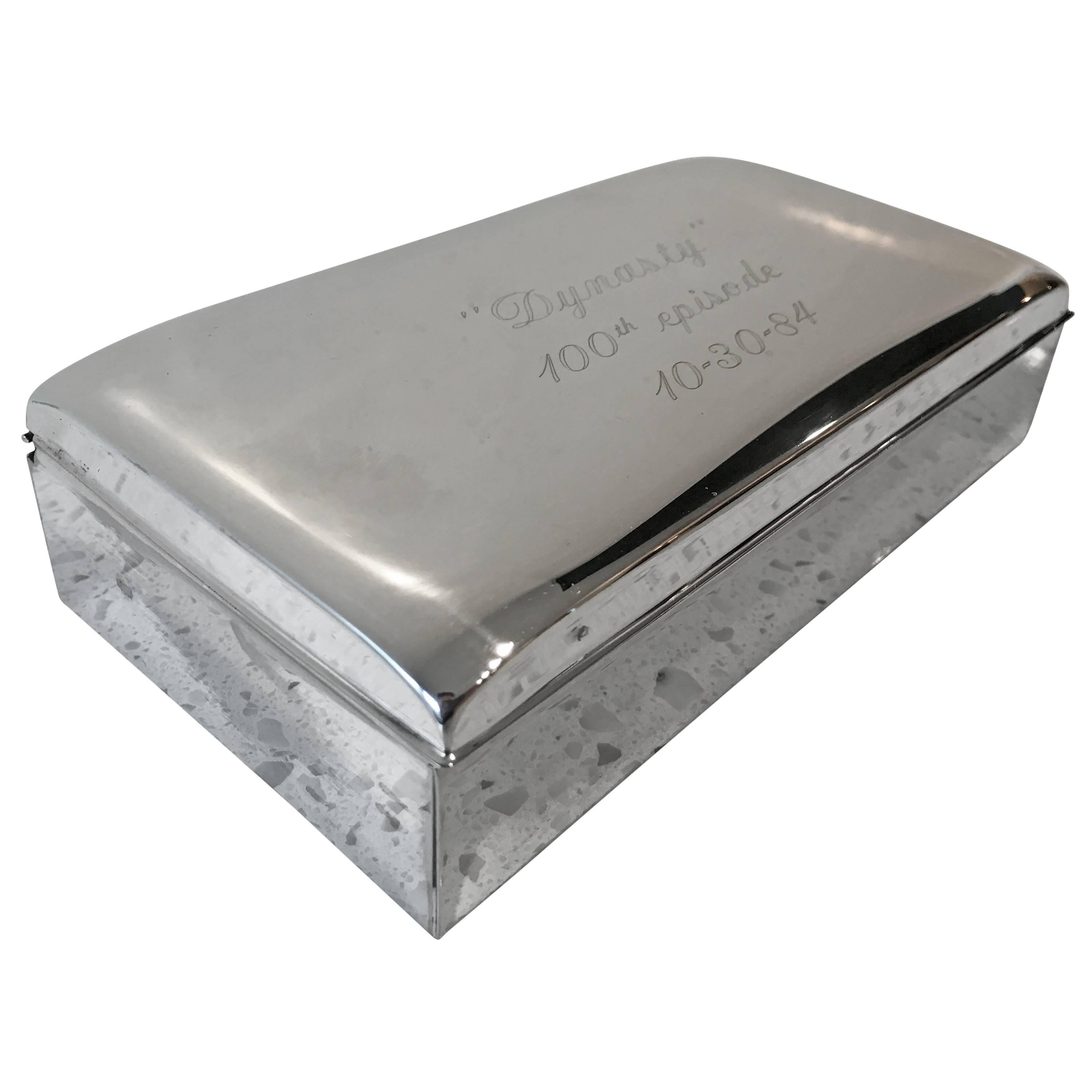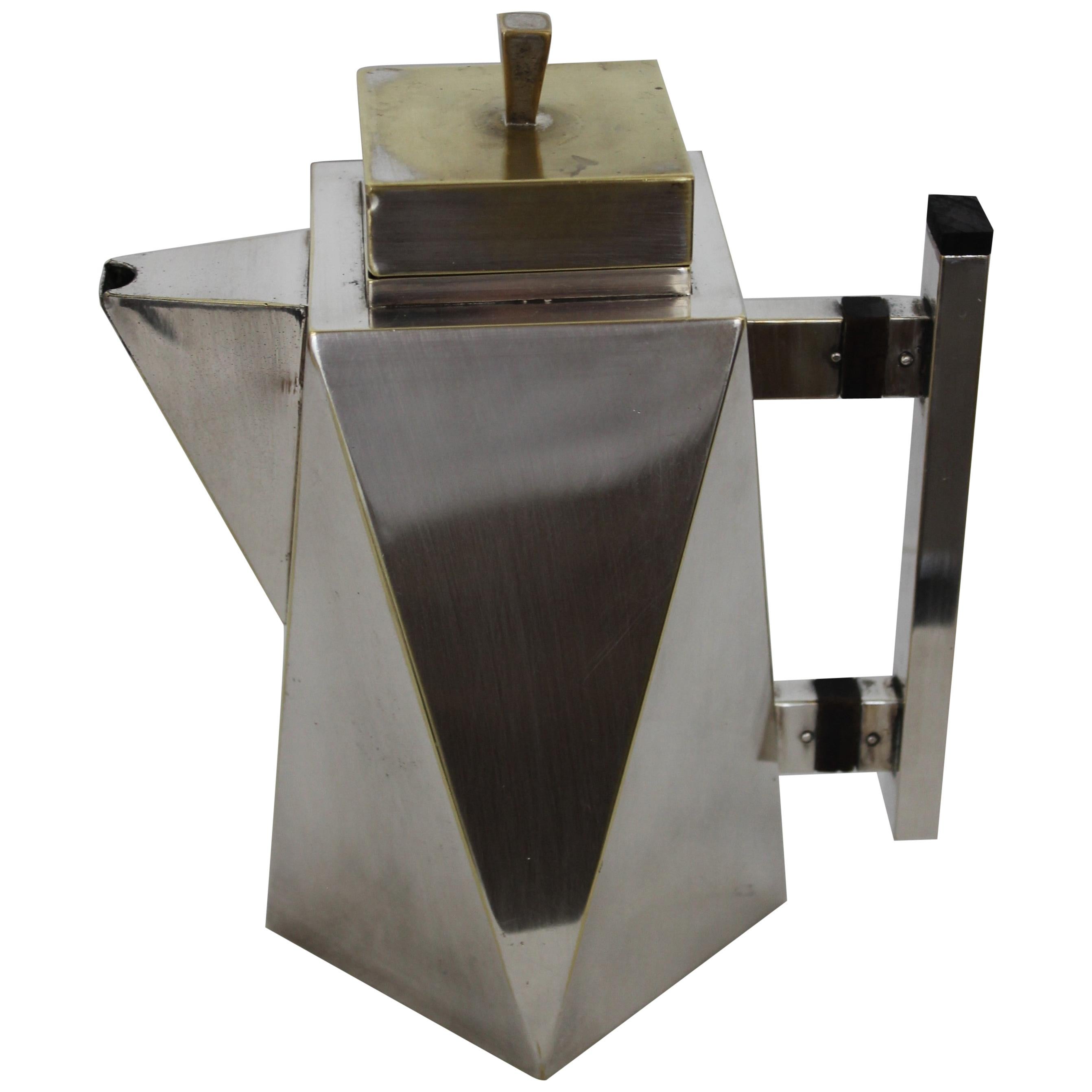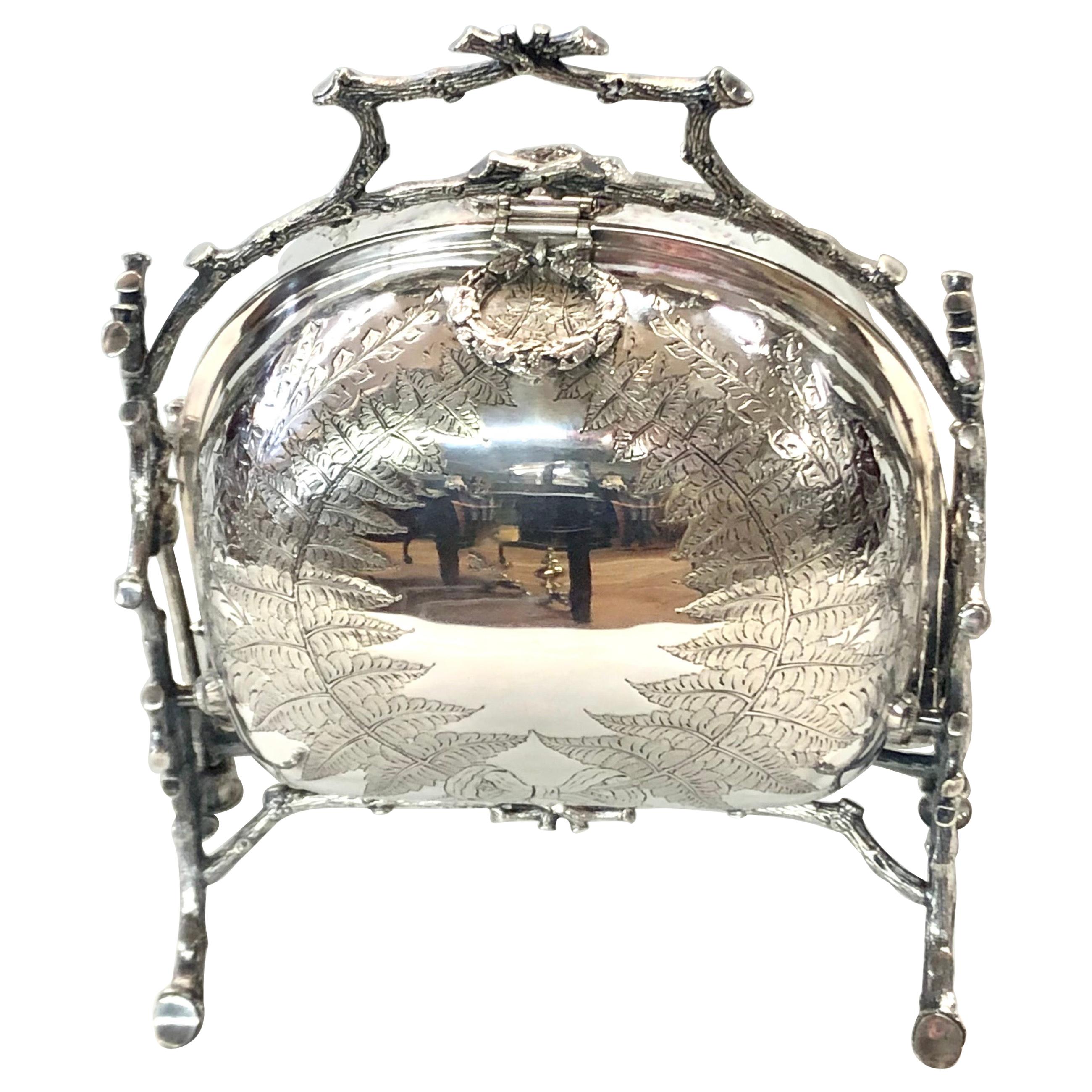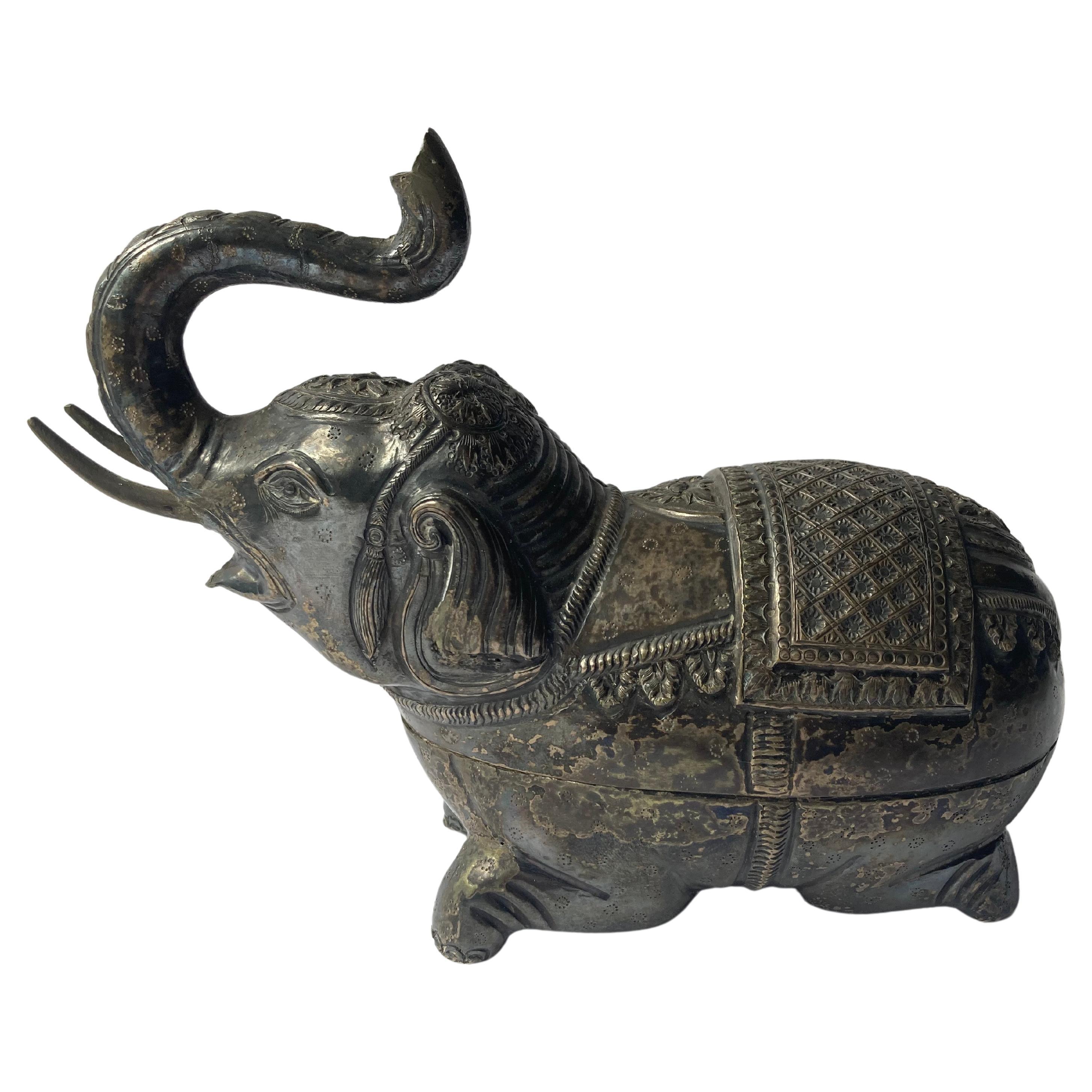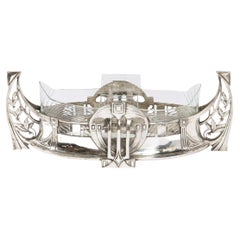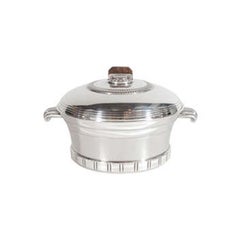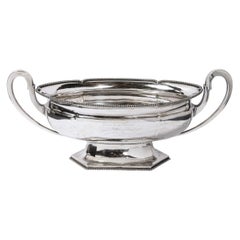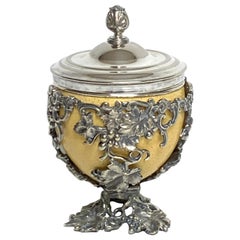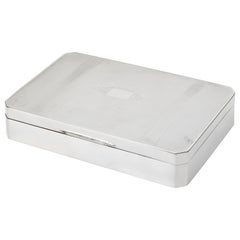
Art Deco Skyscraper Style Geometric Silver Decorative Box by L. & M.T. Co
View Similar Items
Want more images or videos?
Request additional images or videos from the seller
1 of 9
Art Deco Skyscraper Style Geometric Silver Decorative Box by L. & M.T. Co
About the Item
- Dimensions:Height: 2.75 in (6.99 cm)Width: 6.25 in (15.88 cm)Depth: 3.75 in (9.53 cm)
- Style:Art Deco (Of the Period)
- Materials and Techniques:
- Place of Origin:
- Period:
- Date of Manufacture:circa 1935
- Condition:
- Seller Location:New York, NY
- Reference Number:1stDibs: LU793413187251
About the Seller
5.0
Platinum Seller
These expertly vetted sellers are 1stDibs' most experienced sellers and are rated highest by our customers.
Established in 2004
1stDibs seller since 2004
2,021 sales on 1stDibs
More From This SellerView All
- WMF Art Deco Sculptural Silverplate Centerpiece w/ Geometric & Foliate MotifsBy WMF IkoraLocated in New York, NYThis elegant Art Deco silverplate center piece was realized by the esteemed atelier of WMF Ikora in Germany circa 1925. Resembling a stylized Adrestia, or ancient Greek ship...Category
Vintage 1920s German Art Deco Centerpieces
MaterialsSilver Plate
- Art Deco Silver Plated Ice Bucket W/ Burled Walnut Handle by BoulengerBy Jean PuiforcatLocated in New York, NYThis beautiful Art Deco Silver Plated Ice Bucket by Boulenger originates from France, Circa 1930. Features a faceted handle in burled walnut with a scalloped attachment point and hat...Category
Vintage 1930s French Art Deco Soup Tureens
MaterialsSilver Plate
- Swedish Art Deco Streamlined Silver Plate Beaded Trophy BowlLocated in New York, NYThis elegant Art Deco trophy bowl was realized in Sweden in 1924. It offers a sculptural oval body sitting on a hexagonal faceted base with beaded detailin...Category
Vintage 1920s Swedish Art Deco Centerpieces
MaterialsSilver Plate
- Art Deco Skyscraper Style Sterling Silver & Geometric Beveled Glass Perfume SetLocated in New York, NYThis elegant Machine Age Art Deco Perfume set was realized in France- where the finest silversmiths resided during this period- circa 1930. It features thr...Category
Vintage 1930s French Art Deco Garniture
MaterialsSterling Silver
- Mid-Century Modern Silver Plate Stylized Grape Leaf Decorative DishLocated in New York, NYThis refined Mid-Century Modern silver plate decorative dish was realized in the United States circa 1960. Offering the form of a stylized grape leaf with pointed scalloped sides and...Category
Vintage 1960s American Mid-Century Modern Decorative Bowls
MaterialsSilver Plate
- Art Deco Skyscraper Style Silver Plate Ice BucketLocated in New York, NYThis Art deco Skyscraper Style Silver Plate Ice Bucket Originates from France, Circa 1930. Unique and beautifully designed, the piece is highly characteristic of the Art Deco era and...Category
Vintage 1930s Art Deco Barware
MaterialsSilver Plate
You May Also Like
- Deco Style Silver Plate BoxLocated in Stockton, NJA deco style silver plate box. Interested riveted and heavy construction with concave base interior. Marked "Compesi".Category
20th Century Italian Art Deco Jewelry Boxes
MaterialsSilver Plate
- 19th Century English Silver Plated Ostrich Egg Box Attributed to Elkington & Co.By Elkington & Co.Located in West Palm Beach, FL19th century English silver plated ostrich egg box, attributed to Elkington & Co. In three parts, the silver plated lid with Acanthus leaf handle, the silver rimed egg, and the grap...Category
Antique Late 19th Century English High Victorian Decorative Boxes
MaterialsSilver Plate
- Hallmarked Silver Plated Keepsake Box, Sheffield, UK, circa 1900Located in Colorado Springs, COOffered is a stunning silver plated keepsake box dating to 1900, with associated hallmark. This small box includes a wooden interior with two slots and a blank square on top where initials could have been engraved. A well maintained, elegant piece, this antique silver box is an excellent addition to any silver or home decor collection. Trinket or keepsake boxes have taken on many forms since their first conception in ancient times. However their purpose remains the same; to store jewelry and other items precious to the owner. Originally, these boxes were used specifically for jewelry. These were in common use as early as 5000 BC in Ancient Egypt, when the majority of Egyptians, both male and female, wore jewelry. Boxes were used to keep these gemstone encrusted items safe. In Ancient Rome, jewelry was a status symbol. Rings and brooches were utilized to represent ones status in society. Again, boxes were needed for security and storage purposes. Finding early examples of these are quite rare. Victorian and Edwardian examples of trinket boxes are far more common. This is because owning jewellery was a luxury until the Victorian era- let alone possessing so much a box was needed to store it all. Fine jewelry and other items became available to the masses after the industrial revolution due to the reduction in production costs. This led to a demand for trinket boxes, which were much smaller than jewelry boxes and therefore better suited to the needs of the middle class who did not yet possess an abundance of jewelry. In Victorian households, collectables and other items of interested were also stashed inside these boxes. This is why they are known as trinket or keepsake boxes, rather than just jewelry boxes, although of course jewelry was also stored in them. Trinket boxes were produced in large numbers around this time. Many were lined with colored plush or velvet or rich wood. More elaborate designs had interior divisions and trays for rings and other pieces of jewellery. It was also common to see trinket boxes so small that they could only contain one item, such as a single ring. Ornate exteriors were created to reflect the value of the trinket boxes contents. The Edwardian era saw the introduction of new styles of trinket box. These included small circular or oblong boxes...Category
Antique Early 1900s English Art Deco Decorative Boxes
MaterialsSilver
$600 Sale Price20% Off - Hallmarked Silver Plated Keepsake Box, Sheffield, Uk, Circa 1900Located in Colorado Springs, COOffered is a stunning Sheffield silver keepsake box dating to 1900, with associated hallmark. This small box includes a clean interior and rounded corners. The box is free of names or initials, but would have been used to house keepsakes such as jewelry or cufflinks. A well maintained, elegant piece, this antique silver box is an excellent addition to any silver collection. Trinket or keepsake boxes have taken on many forms since their first conception in ancient times. However their purpose remains the same; to store jewelry and other items precious to the owner. Originally, these boxes were used specifically for jewelry. These were in common use as early as 5000 BC in Ancient Egypt, when the majority of Egyptians, both male and female, wore jewelry. Boxes were used to keep these gemstone encrusted items safe. In Ancient Rome, jewelry was a status symbol. Rings and brooches were utilized to represent ones status in society. Again, boxes were needed for security and storage purposes. Finding early examples of these are quite rare. Victorian and Edwardian examples of trinket boxes are far more common. This is because owning jewellery was a luxury until the Victorian era- let alone possessing so much a box was needed to store it all. Fine jewelry and other items became available to the masses after the industrial revolution due to the reduction in production costs. This led to a demand for trinket boxes, which were much smaller than jewelry boxes and therefore better suited to the needs of the middle class who did not yet possess an abundance of jewelry. In Victorian households, collectables and other items of interested were also stashed inside these boxes. This is why they are known as trinket or keepsake boxes, rather than just jewelry boxes, although of course jewelry was also stored in them. Trinket boxes were produced in large numbers around this time. Many were lined with colored plush or velvet or rich wood. More elaborate designs had interior divisions and trays for rings and other pieces of jewellery. It was also common to see trinket boxes so small that they could only contain one item, such as a single ring. Ornate exteriors were created to reflect the value of the trinket boxes contents. The Edwardian era saw the introduction of new styles of trinket box. These included small circular or oblong boxes...Category
Antique Early 1900s British Art Deco Decorative Boxes
MaterialsSilver
- Antique English Oak and Silver Plate Biscuit Box by John Grinsell & SonsBy John Grinsell & SonsLocated in Bath, GBA handsome and very stylish biscuit box dating to circa 1890 by the top notch silversmith, John Grinsell & Sons of Sheffield. Made from solid English oak, the box is fitted with e...Category
Antique Late 19th Century English Late Victorian Decorative Boxes
MaterialsSilver Plate
- Early 20th Century Faceted Glass & Silver Plated Biscuit Box, c.1920By John Grinsell & SonsLocated in Bath, GBA heavy piece of glass was used to create this quality example, faceted all the way around and series of simple linear cuts around the circumference; the underside having a star cut....Category
Vintage 1910s English Art Deco Decorative Boxes
MaterialsSilver Plate
